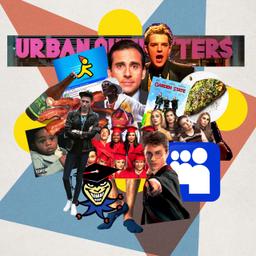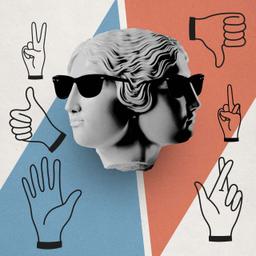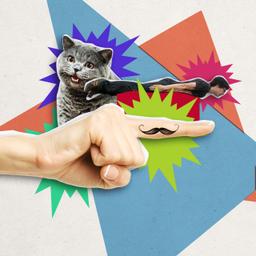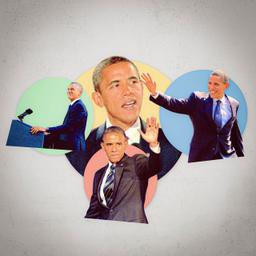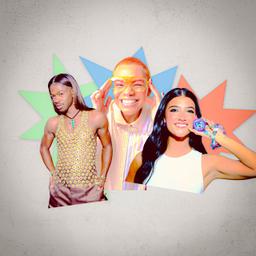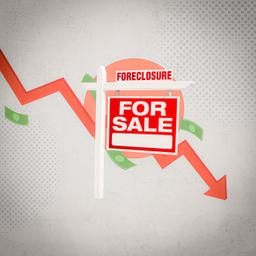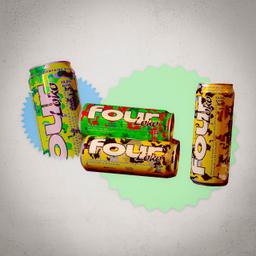Listen close, young friends, and learn the lore
Of Williamsburg, Brooklyn (pre-Hermes store!).
It was spare yet preposterous, indulgent yet gritty,
The talk of the town! The export of the City!
With music and mayhem and shared warehouse space,
Williamsburg had a moment that’s still being chased.
Once long-fertile ground for the strangest delights,
It changed over the decades … and again overnight.
Gather round, boys and girls, and some tales ye shall hear
Of this tragically hip playground from yesteryear.
The one thing about Williamsburg that’s forever the same?
It was *always* more magical *before* I/they/you came.
Once upon a time, back near the turn of the millennium, I, your humble storyteller, was an unhip college student who skimmed over a newspaper trend piece too fast and came away believing that all the cool kids were moving to Colonial Williamsburg. (In my defense, the article probably included the word “artisanal,” adding to the confusion.) I was only, oh, several hundred miles—and several hundred years of American culture—off.
This place where so many of the young artsy types and/or aspiring tastemakers of my generation were choosing to congregate—this Millennial Williamsburg, if you will—was in the borough of Brooklyn, not the commonwealth of Virginia. But, if the past couple of decades have been any indication, my first thought may have been closer to the truth than I originally believed. Throughout the 21st century, one of these locales has become accepted shorthand for “a performative wonderland of bygone Americana.” And the other? Same thing, just with powdered wigs in place of trucker hats.
Way back in the early 2000s, as some of the eldest millennials began graduating from college and setting foot in the real world, Williamsburg was emerging as the hot neighborhood of the moment. Looking back, that was a whole lot of moments—and a whole lot of concerts, buildings, identities, and adult kickball controversies—ago. But Williamsburg never really cooled down in the 20-something years since. Instead, it burned up. These days, packed with skyscrapers and influencers and if-you-have-to-ask retailers, the region feels a lot like a land of make-believe. But Millennial Williamsburg was real, and it was spectacular. Here are a few glimpses into that world:
Chapter 1: Hipsters Are the People in Your Neighborhood
Some wore old threadbare tees, some droned on about “weft”
Some pirated Girl Talk—some considered that theft
Some evoked Ashton Kutcher, some resembled blacksmiths
The hipster, in other words, was no monolith.
What IS a hipster? Is what everyone wonders
But the question only ever tears people asunder.
Some are strivers, or grifters, or yuppies—or worse!!
Their presence is a blessing, and also a curse.
In 1992, New York magazine declared Williamsburg, Brooklyn—an industrially zoned and mostly decrepit patchwork of Polish, Italian, Puerto Rican, and Hasidic enclaves located across the river from Manhattan—“the new Bohemia.” It described an inventive, avant-garde art scene fueled by affordable living and performance spaces. “I think that what’s coming out of Williamsburg,” remarked one artist in the piece, “is going to be the last thing that comes out of New York as the art capital of the world.”
That article included the word “hip” once, but there were, notably, no instances of the descriptor “hipster.” Five years later, that had changed. When the Utne Reader ranked the Top 15 Hippest Places to Live in 1997 (Williamsburg came in third), the term appeared in the piece four times. In 2002, an article about Williamsburg's newest generation included a warning that “the baby-to-hipster ratio threatens to approach parity,” even in this part of town.
And in 2003, one Williamsburg resident published The Hipster Handbook, a tongue-in-cheek send-up with pointers like “Neo-dives are exclusive Elks clubs for Hipsters” and “it’s easy to spot Hipsters in the personals; instead of describing their hair and eye color, they say ‘I like Franz Ferdinand and the Clash.’” When the rudely discerning and aspirationally rowdy Vice magazine moved its headquarters from Montreal to Williamsburg in 2001, the word “hipster” showed up 19 times in the paper of record’s article about the relocation. By 2004, one critic was already asking: “What will the hipsters be remembered for?” Certainly not their vintage clothing, he argued: “Sorry, you can’t be remembered for remembering.”
It was into this testy and rather Gen X environment that the oldest Oregon Trail–era millennials showed up, eager to make memories of memories of their own. In the decades hence, Williamsburg turned into a phenomenon that’s hard to forget, even if you were nowhere near the vicinity at the time.
Chapter 2: I Choo-Choo-Choose You (This L Train Is Bound for Glory)
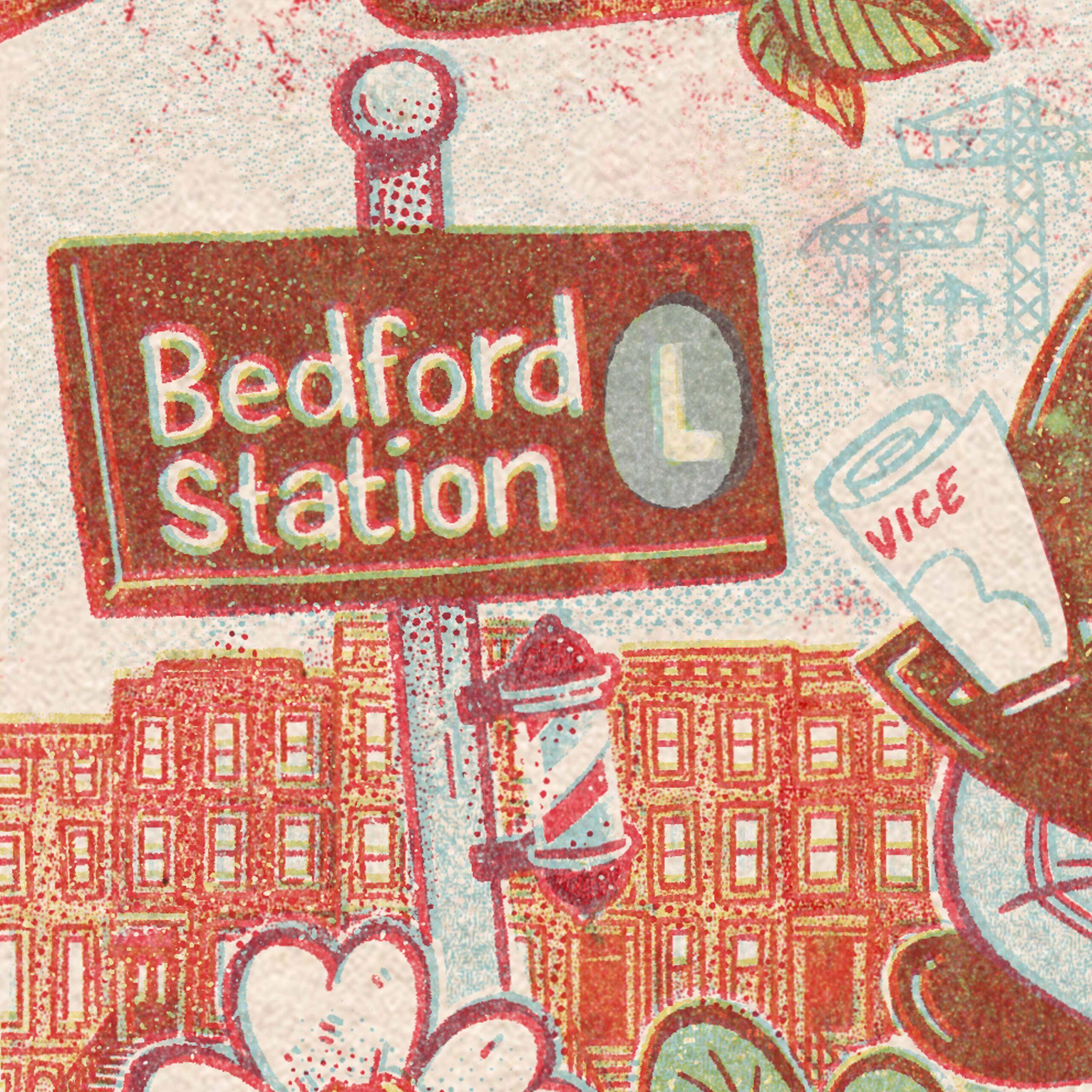
Shoulder to shoulder on a Brooklyn-bound trip
Your messenger bag digging into my hip.
Craigslist Missed Connections, some light Gawker snark
We locked eyes on the L train after dar—
Ah, well, hello kids! Isn't recess till 2?
I’m trying a visualization to reconnect to my youth.
You see, back in the day, without Wi-Fi on trains,
Daydreaming was essential to keep the mind entertained ...
To live in aughts Williamsburg was to grow accustomed to three primary forms of transportation: a bicycle (preferably a fixie); NorthSide Car Service (because yellow cabs often steered clear, and this was pre-Uber), and the subway—the L train in particular.
The L train has long been a lifeline for Williamsburg residents, and frequently also a lovefest. For many, it functioned a little bit like Clark Kent’s phone booth: a place to shed all traces of Smallville squaredom and become the hero of one’s own personal Metropolis. (Well, one’s own Metropolitan Avenue, anyway.)
Running along 14th Street in Manhattan, under the East River, and into Williamsburg, the L train could feel like a portal to another dimension. One moment you’d be in Union Square, with its Virgin Megastore and its Whole Foods, everyone in Lululemon pants as far as the eye could see. Then a few stops later, you’d emerge into an entirely different landscape with distinctive flora (crushed PBR cans) and fauna (mustaches like whales’ tales: no two exactly alike).
And whenever you thought you’d gotten familiar with the commute, everything would change. “Since the last time I was here—four months ago,” remarked a New York journalist on a 2005 L train–based anthropological expedition, “the Lorimer neighborhood seems to have gone to rehab, joined a gym, and had a very successful sex-change operation. It feels like time-lapse gentrification.” In the 20 years since that was written, the area’s been characterized by even more transformations, real estate developments, and phrases you wouldn’t write today. Which feels very Williamsburg indeed.
In 2016, the NYC powers-that-be announced that the L train would be shut down for more than a year for needed construction, a scenario that became known and feared as the coming “L-pocalypse.” But in the end, it was mostly a whole lotta nothing. The L train rolls on as always—unless, of course, there’s a signal problem. Same as it ever was.
Chapter 3: The Domino Sugar Refinery and the Nu-Waterfront
Ye olde sugar factory that time forgot
Smelled like “crème brûlée mixed with mold and rot.”
These days, that sweet, sweet waterfront land
Reeks of piles of cash exchanging hands.
Cross heavy machinery with Candyland, and you get the Domino Sugar Refinery. Built along the East River waterfront in 1882, this factory once produced 98 percent of the sugar consumed in the United States. But following a long, slow decline, it closed for good in 2004. With its iconic neon sign, the refinery’s hulking brick shell stood as a monument to industrial decline … and beckoned developers who were intrigued by the idea of a revitalized Williamsburg waterfront.
A 2005 rezoning by then-Mayor Mike Bloomberg opened the floodgates for hyperdevelopment. And the “neglected and desolate” land that was once the province of local skateboarders and trash tumbleweeds became what a friend of mine calls “the Brickell of Brooklyn.”
Today, Domino Park is a curated landscape of salvaged refinery artifacts (mooring bollards, syrup tanks, gantry cranes) woven into playgrounds and promenades. And the old factory is a multiuse building that’s been rebranded as “The Refinery at Domino.” The brick facade and neon sign remain, but the sugar’s been siphoned. In its place is multimillion-dollar real estate with the sweetest skyline views.
Not far away, near North 11th Street, “it was old plastic bag factories, right? There was nothing there forever,” says one neighborhood resident named Ben, who ran the online hub Williamsboard back in the aughts, in a phone conversation. “My band had a practice space on that street. We would go out in the street and play Wiffle ball and drink beers. And it was just a ghost town.” Now it’s a nightlife hub complete with chic hotels—and an axe-throwing range nearby.
Chapter 4: The Music of the Realm, or: A Song of Lines and Grime
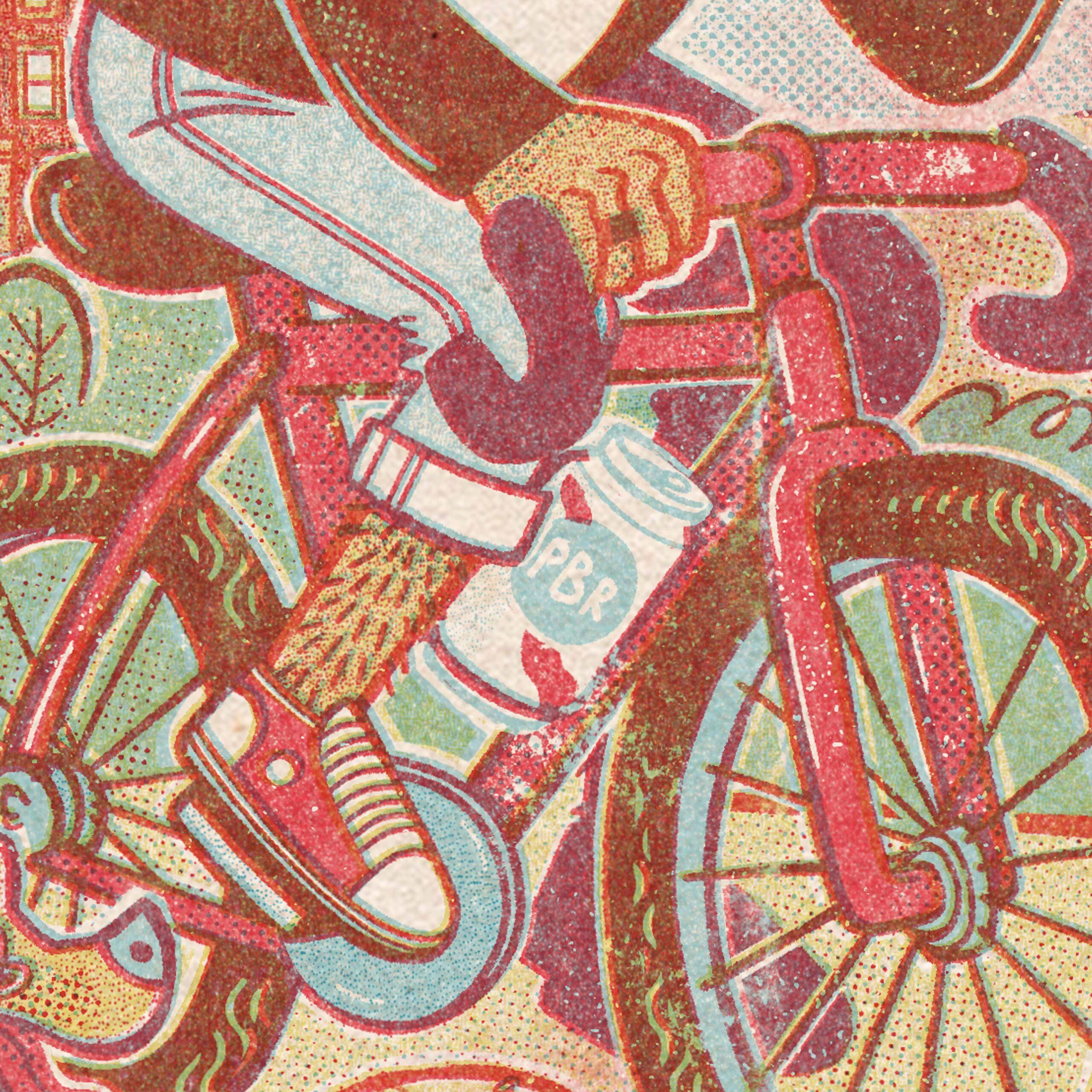
The headbands were everywhere, the concert was free
MGMT at McCarren Pool was the place to be.
All the pool’s a stage, as the Bard* once wrote!
(*Fine, a Bard grad at a loft party with a Billyburg Shakespeare tote.)
All dreamworlds need a proper sonic landscape, and Williamsburg’s had musical performances that have ranged from great (the Yeah Yeah Yeahs at Luxx in 2000; Sonic Youth in 2011; some buncha banjo players at Pete’s Candy Store in 2009) to, welp, maybe let’s beat the traffic and give NorthSide a call? (Lauryn Hill in 2011.) The neighborhood has also been the location of many a musical meet-cute.
Members of TV on the Radio met while one of them, Kyp Malone, was working at the late, great Verb Cafe. Former teen pop singer Alexis Krauss once came out of the bathroom during lunch at a Brazilian bistro in the mid-aughts to find her chatty mom talking up the nice waiter who was working on a noise-music concept and trying to find a female vocalist. Throw in a pair of headphones, a laptop, and nearby McCarren Park, and the rest is the Sleigh Bells origin story.
But a few concerts were particularly representative of the millennial era of Williamsburg (Carles-core, perhaps?):
3. Vampire Weekend at GlassLands Gallery (2007): “The first show we put together ourselves,” according to Ezra Koenig in a New York Times review—one that described Vampire Weekend as “an emerging local band that seems likely to become an indie favorite” and used the phrase “debut MySpace page.”
2. Grizzly Bear at the Williamsburg Waterfront (2009): A show that Solange brought Jay-Z and Beyoncé to see!
1. And the undisputed skinnyweight champion: MGMT (and the Ting Tings) at McCarren Pool (2008), a perfect storm (complete with threatening thunderstorms) of a free concert. This event combined one of the hottest bands on the indie scene with what was, for a few brief shining summers, New York’s most idiosyncratic concert venue: a long-drained, crumbling, Depression-era municipal megapool turned amphitheater that bordered Greenpoint and Williamsburg.
With great hype comes great disappointment, and this concert—while gleefully documented—was also fairly stressful for all involved. (Millennials tend to thrive under such conditions, to be clear.) Fans waited for hours, sweating under their umbrellas; many people never made it in. And the band seemed a little overwhelmed by the entire vibe, too.
In that summer of 2008, MGMT was in the middle of a meteoric rise: They’d started the year live on Letterman, performed around the world, and played festivals like Glastonbury, Bonnaroo, and Lollapalooza—a far cry from their formative Wesleyan quad. Still, the crowd at McCarren was, like, a lot to handle. So many people wearing decorative headbands, aping MGMT’s early style; so many critics ready to judge.
“That concert was totally nerve-wracking for us,” MGMT’s Ben Goldwasser told Hot Press a few months later. “You had, like, every scenester in New York there, with their arms folded, waiting for us to fall on our asses so that they could go home and write about it on their frickin’ blogs. That was a tense affair.” And a millennial one, through and through.
Chapter 5: That First Flush of Love …
Legend says Cupid’s arrow once broke free
And landed in the shadows of the BQE.
It’s why everyone looks so damn aglow
In the light of the Union Pool patio.
McCarren Pool wasn’t the only aquatic-adjacent space to define Millennial Williamsburg. In 2000, Union Pool opened in a former pest control and pool supply store. Which was fitting because the bar’s patrons sure had a tendency to turn into animals. And—earmuffs, boys and girls!—it probably took pool-grade chlorine to clean up after their mess.
When Robert Lanham wrote The Hipster Handbook in 2003, he included a list of many careers inside the hipster economy—sidewalk salesperson, editor, etc.—but he left one out: bathroom bouncer. It’s a tough job, but someone’s got to do it. Or else (earmuffs, again!) everyone will be doing it, you know what I mean?
You see, when a man and a woman love each other very much—well, they probably don’t go to Union Pool. “The Horny Utopia of 2000s Williamsburg,” my former colleague Allison P. Davis called it in The Cut, explaining that Union Pool was a place where the odds were good, and the goods were … “grody and great and plentiful.”
Chapter 6: Smorgasburg: The Millennial Food Fair

Millennials love fast food and cherish fine dining.
But their true passion? Standing in long lines and whining!
The Williamsburg food scene indulged all these needs,
Which is why its influence has spread like a weed.
In many ways, the food scene in Williamsburg is a lot like the neighborhood’s skyline, with entrenched old 19th-century giants jutting up against conspicuous 21st-century designs.
Peter Luger Steak House opened its doors in 1887! The red-sauce joint Bamonte’s—a favorite of Joe DiMaggio and, whenever they’re in town, the Florida Panthers—was established in 1900! (Both are still in active production, unlike their contemporary the Domino Sugar Refinery.) But on the other hand, you also have concepts like Smorgasburg, a word that sure isn’t in the Bible, yet has become something of a modern food culture mantra.
Launched in 2011 as an offshoot of Brooklyn Flea, the food vendor cornucopia quickly became “like a summer rock festival for food.” Dozens of small operators lined the Williamsburg waterfront every Saturday, serving up small-batch everything to day-tripping crowds. (Maybe this really was Colonial Williamsburg after all!) When one enterprising former banker turned ramen-blogger perfected a burger with buns made out of ramen in 2013, he made his debut at Smorgasburg, obv.
In today’s TikTok world, this kind of Frankensteinian foodstuff feels like table stakes. Twenty-first-century food trends like “burger, but make it medium classy,” “lowbrow-brilliant-quadrant comfort food,” “cool butcher,” and “restaurant that also peddles provisions” have all become so internationally ubiquitous that it’s easy to overlook their turn o’ the century Williamsburg influence. (I’m going to hear that cerulean sweater speech from The Devil Wears Prada every time I eat a chicken sandwich.)
From Dumont Burger to Pies ’n’ Thighs to Marlow & Various Offspring, many of the neighborhood’s top mid-aughts restaurants were led by employees that had crossed paths before, often at the local standby Diner. The diaspora of Brooklyn culinary talent that’s connected to restaurateur Andrew Tarlow looks a lot like Bill Parcells’s coaching tree. Or, come to think of it, like some sort of generational Smorgasburg.
Chapter 7: It Takes 11211 to Know One
A friend’s laughter. Fresh berries. The warmth of the sun.
They’re nice—but have YOU ever had zip code 11211?
Rad Postal Service collab—let’s go get it tattooed!
Now, to take a big sip of coffee and look at the news …
In much the same way that longtime New Yorkers fretted over the closing of the 212 area code frontier in the late ’90s, a number of Williamsburg dwellers went through a crisis of identity in 2011, when they learned that not everyone could have the palindromic and effortless-chic 11211 zip code anymore. (Classic Williamsburg, always having to one-up the goings-on across the bridge with something slightly fussier and more analog!)
Williamsburg had been growing for decades, and its identity was shifting, but this was the most bureaucratic proof yet. (“Change is not always easy or convenient,” the local postmaster sympathized at the time.) It was also logistically annoying: pour one out (and by one, I mean one Rheingold) for the neighborhood trustafarians who had to deal with updating their parents and/or banks on the new zip code—or risk missing a check. I kid, I kid! Well, unless.
Chapter 8: Putting Williamsburg on the Map
“What’s your city’s Williamsburg?” Gawker asked readers,
Compiling a global dossier of hip leaders.
Having already influenced fashion, music, and food,
Williamsburg has a much bigger export: its ’tude.
Williamsburg isn’t only a physical place.
It’s the cut of your jib; it’s the smirk on your face.
It’s bristling at your edgy up-and-coming sidekick.
(Smart by Gawker to also ask: What’s your Bushwick?)
Derek Miller, of the band Sleigh Bells, tells me in an email that when he was living in South Florida in 2006, a childhood friend who’d just moved to Williamsburg texted him: “I’m watching Deerhoof at a pool three blocks from my apartment get the fuck up here!” A couple of years later, he finally got his chance, finding a room to rent for $500 a month.
“My friend Brian Montuori, who did the artwork for Jessica Rabbit, was living there,” Miller remembers. “It was right up against the BQE … the Meeker exit dumps right off by the front door, so you’d wake up to all manner of jammed-up, burning vehicles right outside a couple times a week. Loved it!”
Eventually, though, the nature of what Williamsburg represented to outsiders would soften and blur. In 2014, Gawker—a longtime, painstaking chronicler of Williamsburg’s accomplishments and absurdities—posted a crowdsourced list of neighborhoods in the U.S. and abroad that qualified as “the Williamsburg” of their area. Writer Max Read defined this as: “its hippest—or formerly hippest—or sometimes just youngest—neighborhood, the one with the art galleries and the boutiques and the lines for brunch?”
By this definition, you could make the argument that much of Brooklyn, parts of Queens, and pretty much all of Manhattan qualified as “the Williamsburg” of New York—and really, that was kind of the point. More than a decade had passed since the old Williamsburg went mainstream. Once upon a time, it was idiosyncratic. Now it was clear that the rest of the world was in sync.
Chapter 9: What Time Is the Party Over?

Some hard-earned advice from my checkered past:
Leave when it’s fun! You don’t have to be last!
Millennial Williamsburg’s over, that much is clear
But when did it all end? What was the year?
When the new Hermes building on North 6th in Williamsburg was revealed earlier this year, it had a thoughtful, telling touch: faux bricked-up windows that were designed to make the façade look like it had been around for a couple of centuries, as opposed to a couple of days.
In some ways, this was apt, even charming: How many people who moved to the neighborhood over the years had done a version of this with their own selves, constructing layers of intrigue and backstory to help them fit in with a tough crowd? On the other hand: Ma’am, this is an Hermes. On North 6th Street in Williamsburg. A thoroughfare that used to be almost entirely music venues and dive bars. There goes the neighborhood, I would say, if the neighborhood hadn’t gone long ago.
But when was it over? At Gothamist, John Del Signore offered quite a number of options: “Some decided the neighborhood was ‘so over’ when Kokie’s inhaled its last key bump,” he wrote (Kokie’s closed in 2001, for the record) “or when Stinger Club shut down, or when Rubulad left South 5th Street, or when Monkey Town closed, or Galapagos moved to DUMBO, or after Verb went bust, or the Pool Parties were drained, or J. Crew opened.”
He wrote all that in 2014; needless to say, there’ve been even more grand openings and grand closings since. And as Del Signore pointed out, the Williamsburg-being-over conversation is now practically old enough to rent a car. Maybe Williamsburg was over in 1992, the instant it was christened “The New Bohemia.” Maybe its spiritual death took place in 2006, when a real estate ad for some high-rise apartment bragged: “Warning: It is now illegal to get this high.” (Or in 2011, when a real estate ad described a building as: “A new loft inspired development built for those who never settle for less than the right denim, the right playlist and the right restaurant at the right time.”)
Maybe the last straw was when TV on the Radio’s Dave Sitek closed his Williamsburg recording studio, Stay Gold, in 2009, noting: “There are more strollers, cops on every corner, and about 16 more Thai restaurants now. … The price of Williamsburg really pushed out a lot of talented people.” Maybe it was when Vice decided to level up its local headquarters in 2015 by acquiring the very DIY music venues that had long distinguished the community—or when Vice moved out eight years later after filing for bankruptcy, all that damage for naught.
One of the nicest things about cheap rent is that it buys people time. Time to experiment, time to collaborate, time to fail, time to fuck around and, oh, maybe start a band or a restaurant. For a while there, Williamsburg felt like a place where you could find all the time in the world if you knew where to look. But nowadays, most of those hiding spots have been excavated; most of that time is up. And children, you’ll just have to believe me: What a time it was.
